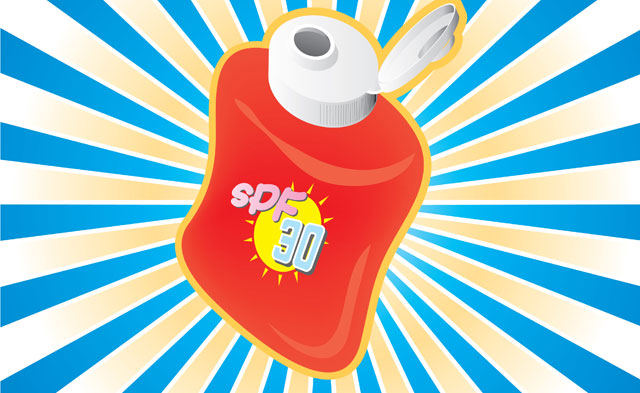Sun protection buying guide

Summer is here. So is the sun. Mostly that’s a good thing. It means longer days for playing with your friends and exploring the outdoors. But if you’re not careful, too much exposure to the sun can cause problems for you now and down the line (think: sunburns AND skin cancer).
Who better to tap for sun-protection advice than a professional angler who fishes more than 150 days a year and spends up to 12 hours a day on the water?
“I’m constantly out there and definitely in the sun all the time,” says Justin Lucas, a 23-year-old pro fisherman with Team National Guard.
There are some simple things you can do, and gear you can use, that are effective while still letting you squeeze every last drop of fun out of summer. Read on and get the lowdown.
SUNSCREEN
“It’s nice to have a good-looking tan, but you also have to think about your skin down the road,” Lucas warns.
The sun’s rays are broken into two types of ultraviolet rays: UVA and UVB. Both are harmful, but UVB rays burn your skin and cause most cases of skin cancer. Covering yourself with clothing and a hat is the best way to avoid sun exposure, but for the parts of your body that are uncovered, wear a sunscreen with a sun protection factor (SPF) of at least 15.
All sunscreens are labeled with an SPF number. The higher the SPF, the longer your skin can last in the sun before it burns (though most experts say anything over SPF 30 doesn’t add much protection). So if you normally burn in about 10 minutes, SPF 15 sunscreen will protect you for about 150 minutes. “I always put sunscreen on first thing in the morning when it’s still dark outside,” he says. “It’s important to put it on at least 20 minutes before your skin is exposed to the sun. Then I reapply it at least two times throughout the day.” Apply plenty of lotion, and pay special attention to your face, ears and neck. Don’t forget the tops of your feet if you’re wearing flip-flops.
The sun is at its strongest between 10 a.m. and 4 p.m. At higher elevation, the sun is even stronger. Water reflects almost 100 percent of UV radiation. Even if your head is covered, the UV rays will still find your face. So be prepared — and be smart.
HATS
A hat can act as your own personal shade tree. One with a four-inch brim will reduce the sun exposure to your head, neck and face by up to 70 percent. For maximum protection, look for a hat made with UPF (the amount of ultraviolet light that penetrates fabric) of 15 or greater.
“A lot of guys I fish with wear sun hats, the ones with the big rounded bills,” Lucas says. “They are good, but for me it’s just easier to wear a regular baseball cap.” Baseball caps are fine, but if you wear one, Lucas says you must remember to put sunscreen on spots a hat won’t cover, like the tops of your ears, cheekbones, the tip of your nose and the back of your neck.
SUNGLASSES
Too much sun can harm your eyes. Prolonged exposure to UVB rays over many years can cause cataracts, a nasty disease that clouds the lenses of your eyes. So protect yourself with a quality pair of sunglasses.
Gear Guy has preached to readers about this in the past: Don’t even think about wearing those cheap drugstore sunglasses. And darker lenses aren’t necessarily better. Make sure you get glasses that are labeled 100 percent UV protection or UV 400.
“The real key to sunglasses when you’re in the outdoors is polarization,” Lucas says. “As fishermen it helps us see into the water, but polarization also drastically reduces glare no matter what you’re doing.”
UV-PROTECTIVE CLOTHING
Last summer, your mom was probably nagging you to wear a T-shirt in the water so you wouldn’t get a sunburn. Well, that only sort of works. A dry cotton T-shirt gives you the protection of only about UPF 8; a wet one offers only approximately half that.
For best protection, wear a shirt that’s designed to protect you even when it’s wet, like the one from O’Neill below. Otherwise, look for stuff that has at least UPF 15.
“Long-sleeve shirts and pants are best,” Lucas says. “They protect your skin and actually keep you cooler, especially the ones that have vents in them.” Stick with light-colored fabrics and those made of lightweight nylon blends that keep you dry while wicking the sweat away from your skin.
Leave a Comment